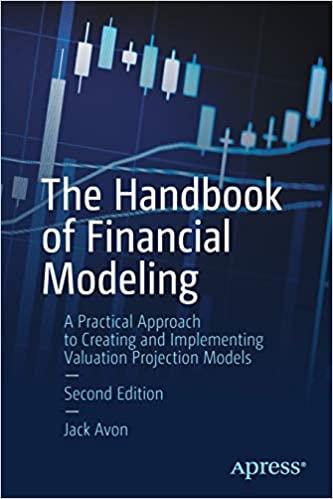Question
Ecsy-Cola Libby Flannery, the regional manager of Ecsy-Cola, the international soft drinks empire, was reviewing her investment plans for Central Asia. She had contemplated launching
Ecsy-Cola Libby Flannery, the regional manager of Ecsy-Cola, the international soft drinks empire, was reviewing her investment plans for Central Asia. She had contemplated launching Ecsy-Cola in the ex-Soviet republic of Inglistan in 2021. This would involve a capital outlay of $26 million in 2020 to build a bottling plant and set up a distribution system there. Fixed costs (for manufacturing, distribution and marketing) would then be $3,0 million per year. This would be sufficient to make and sell 150 million liters per year enough for every man, woman and child in Inglistan to drink four bottles per week! But there would be few savings from building a smaller plant, and import tariffs and transport costs in the region would keep all production within national borders.
The variable costs of production and distribution would be 9 cents per liter. Company policy requires a rate of return of 23% in nominal dollar terms, after local taxes but before deducting any costs of financing. The sales revenue is forecasted to be 38 cents per liter.
Bottling plants last almost forever, and all unit costs and revenues were expected to remain constant. Tax would be payable at a rate of 35%, and under the Inglistan corporate tax code, capital expenditures can be written off on a straight-line basis over four years.
All these inputs were reasonably clear. But Ms. Flannery racked her brain trying to forecast sales. Ecsy-Cola found that the "1-2-4" rule works in most new markets. Sales typically double in the second year, double again in the third year, and after that remain roughly constant. Libby's best guess was that, if she went ahead immediately, initial sales in Inglistan would be 12 million liters in 2021, ramping up to 48 million in 2023 and onward.
Ms. Flannery also worried whether it would be better to wait a year. The soft drink market was developing rapidly in neighboring countries, and in a year's time she would have a much better idea whether Ecsy-Cola would be likely to catch on in Inglistan. If it didn't catch on and sales stalled below 20 million liters, a large investment probably would not be justified.
Ms. Flannery had assumed that Ecsy-Cola's keen rival, Sparky-Cola, would not enter the market. But last week she received a shock when in the lobby of the Kapitaliste Hotel she bumped into her opposite number at Sparky-Cola. Sparky-Cola would face costs similar to Ecsy-Cola. How would Sparky-Cola respond if Ecsy-Cola entered the market? Would it decide to enter also? If so, how would that affect the profitability of Ecsy-Cola's project?
Ms. Flannery thought again about postponing investment for a year. Suppose Sparky-Cola were interested in the Inglistan market. Would that favor delay or immediate action? Maybe Ecsy-Cola should announce its plans before Sparky-Cola had a chance to develop its own proposals. It seemed that the Inglistan project was becoming more complicated by the day.
QUESTIONS
1. Calculate the NPV of the proposed investment, using the inputs suggested in this case. How sensitive is NPV to future sales volume? Calculate cash flows after tax for the years 0, 1, 2, 3, 4, 5+ for each of the following cases: Expected sales the first year a) of 20 million liters (probability of 30%), b) of 12 million liters (probability of 45%) and c) of 5 million liters (probability of 25%). Next, calculate the associated NPV in each case and finally the expected NPV. Do you think Ecsy-Cola should carry out this investment in Inglistan? Briefly explain.
2. Ms. Flannery found it difficult to understand the extremely high required rate of return of 23%. How sensitive is NPV to required rate or return? Calculate the NPV for each scenario using a required rate of return of 13% and the associated expected NPV. Give a couple of arguments for why it would be reasonable to use 23% and a couple of arguments for why it would be reasonable to use a lower rate like 13%.
3. What are the pros and cons of waiting for a year before deciding to invest? Calculate expected NPV associated with waiting using a required rate of return of 23% and a required rate of return of 13%. Discuss what may happen if demand turns out high and Sparky-Cola also invests. What if Ecsy-Cola invests right away and gains a one-year head start on Sparky-Cola?
Would be very thankfull for a solution on this task, I`m struggling with it..
Thank you in advance!
Step by Step Solution
There are 3 Steps involved in it
Step: 1

Get Instant Access to Expert-Tailored Solutions
See step-by-step solutions with expert insights and AI powered tools for academic success
Step: 2

Step: 3

Ace Your Homework with AI
Get the answers you need in no time with our AI-driven, step-by-step assistance
Get Started


